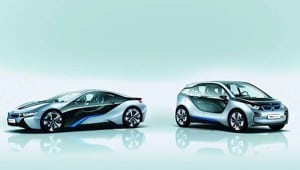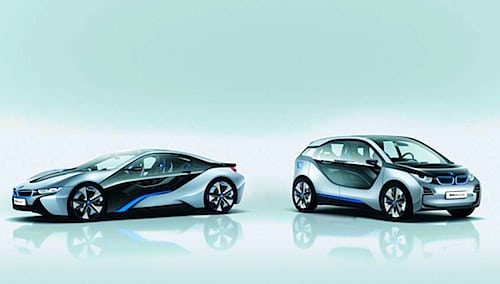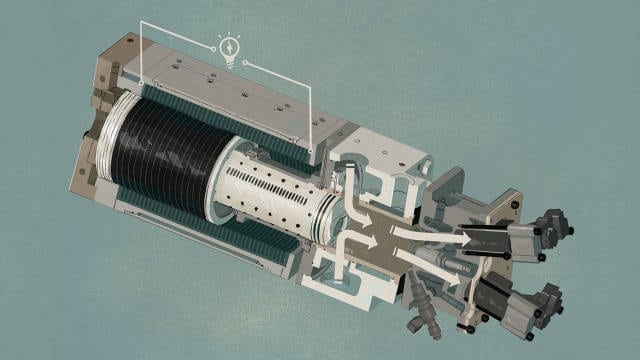
BMW is taking an incredible bet for the future with a bold electric i3 and a stunning plug-in hybrid i8. The German carmaker uses space age materials for lightness and sturdiness and bypasses the local competition.
BMW is stepping into the future both feet first with its electric i3, and soon to be followed the dramatic plug-in hybrid (PHEV) i8. I interviewed Benoit Jacob, Group Design at BMW to find out more about the cars.
A Talk With Benoit Jacobs on the iDrive Design. Benoit told me he was having a lot of fun designing the new electric car era with passion, performance and efficiency. He is adamant about passive aerodynamics to funnel airflow in and around both cars. No automated and electronic gimmicks here, both cars discreetly sport hidden spoilers in an aesthetically pleasing way.
Technically Speaking. We know a little more about the electric i3 then we knew a few months ago. Not only the i3 will achieve close to 100 miles per charge, it will also be available with a flat two-cylinder motorcycle engine to extend its range, thanks to the company’s Motorrad motorcycle devision. My sources at BMW told me the car is a blast to drive through the twisty canyons of Southern California. As far as performance, the 0 to 60 km/h (37 MPH) is done in a zippy 3.7 seconds and the 0 to 100 km/h (62 MPH) in 7.2 seconds. Why is the 0 to 37 MPH so important? 0 to 37 MPH is all you really need for city driving and perfect for passing conventional floating couches on small highway stretches.
With a low battery center of gravity, its 50/50 weight distribution allows for dynamic driving and tight U turns. The rear mounted electric motor is rated for 170 HP (125 kW) with a peak torque of 184 LB-ft (250 Newton meters).
The range is between 81 to 99 miles but the i3 comes with an ECO PRO mode, good for 93 to 111 miles. In case that isn’t enough, an ECO-PRO+ mode will further increase the range to 105 to 123 miles. Level 2 (220 V) charging takes about 6 hours, and the i3 can take up to 50 kilowatt of fast charging. In this case, an 80% charge can be reached in as little as 30 minutes. If you are still on the fence with 100 miles, the i3 will come with an engine generator, which will give it about 200 mile range.
The i3 comes with ConnectedDrive that allows multiple trip planning, as well as including other modes of transportation, such as mass transit and walking. The i3 comes with driving assistance systems with collision warnings, parking assistant that automates braking and acceleration for those who find parking a challenge. Also, a traffic jam assistant allows you to keep pace with speed and braking in heavy traffic.
Lightweight, Tough and Powerful. Those three words could sum up both i3 and i8. Weight is the number one enemy for an electric vehicle, which affects its range. Understanding this well, BMW chose to buy its very own fiber carbon company to be used with its i purpose-built frames for the all-electric i3 and i8. Having perfected its Carbon Fiber Reinforced Plastic (CFRP), the LifeDrive will be the main ingredient material, ideally suited for electric cars. It is not only extremely light, but extremely strong. Heralding a new beginning at BMW, the upcoming BMW i vehicles will mark the first ever series produced using CFRP, ushering BMW into the future.
The BMW i department went to great length to make sure weight and sturdiness were integral parts of its new line of electric cars. The carbon fiber passenger cell is covered with Thermoplastic steel, which has the advantage of being less than half the weight of conventional steel. With a vehicle as light as possible, range and overall performance go up. Another added perk is its very elastic, sustainable material protects the car from small dents and other environmental effects, such as rust. Sustainability is also achieved especially when compared to the manufacturing of a traditional steel bodywork. It uses only a quarter of the energy to build.
We’re very excited to see BMW jump into the electric vehicle (EV) segment with its i3. We can’t wait to do a test drive of both BMW’s i3 and i8.
[slideshow id=135]







